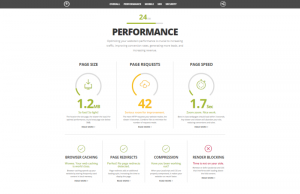‘Dune’ is too big for your TV
It’s what theaters were made for.The real world just felt too small when I stepped out of Denis Villeneuve’s Dune. There weren’t any enormous spaceships ready to rocket off to planets in distant galaxies. No Brutalist palaces amid endless desert vistas. No building-sized sandworms roaming about, eager to devour anyone who disturbed them. Just me and traffic on Atlanta’s I-285.
This latest Dune adaptation isn’t perfect — it’s at times emotionally empty, and it’s basically set up for a second movie we may never see — but it successfully transported me to the universe Frank Herbert created over half a century ago. The film focuses on half of the novel, telling the story of Paul Atreides (Timothée Chalamet), a sheltered baron’s son who moves to the desert planet of Arrakis. It’s an important post, since it’s the only world that produces the melange, or spice, which powers interstellar travel. But as Paul quickly learns, it’s also a dangerous place for his elite family, and it’s where he learns he may also be a potential messiah. You know, typical teen boy stuff.
After being wowed by Dune in the theater, I plan to rewatch it at home on HBO Max, where it’s also being released today. But I’m certain the experience won’t be the same, even on my 120-inch projector screen. This Dune demands to be seen on something even bigger—a place where your very sense of being can be dwarfed. Dune made me feel like Paul Atreides standing in front of a skyscraper-sized sandworm, waiting to be consumed. And I welcomed it.
Of course, it’s no simple thing to trek out to the cinema these days, not with coronavirus still raging and fellow theatergoers refusing to take basic safety precautions. (The vaccines are safe. Masks work. Please protect yourself and others.) But if you can manage to safely see it in theaters — perhaps by renting out a private screen with friends — you’ll be reminded of what makes that experience so special. I watched it in the second row of a fairly typical multiplex theater, and it still floored me. I can only imagine what it would be like on a full-sized IMAX screen, which can reach up to 98 feet tall.
Dune is at its best when Villeneuve and cinematographer Greig Fraser let you soak in the vistas, the regal-yet-alien costumes and the wealth of background details. It’s pure visual world-building. At one point, a character’s eyes briefly flash white when he’s asked to compute the cost of an imperial envoy’s trek through the stars. It’s never explained, but you get it. This style of slow burn sci-fi isn’t for everyone, but if you enjoyed Arrival or Blade Runner 2049, Villeneuve’s previous genre forays, there’s a good chance you’re primed for this brand of storytelling.
Even before I saw anything on the screen, though, I felt Dune in my gut. As I waited for my screening to begin, an alien voice began speaking out of nowhere, sounding like it came entirely from the theater’s subwoofers. It posed a question about the power of dreams, but really, it was as if the movie was saying, “Sit up, pay attention, you’re not on Earth anymore.”
The film’s inventive sound design doesn’t stop there. Everything you hear — from the roar of spaceships as they take off, the buzz of dragonfly-like vehicles as they flap their wings, or the sphincter-clenching roar of the sandworms — is meticulously crafted to make you believe it’s all real. Hans Zimmer’s score doesn’t tread too far from his Gladiator vibe, but does a fine job of making everything sound epic. (And yes, I was blasting it down the highway as I sped back home.)
Don’t take my praise for this movie as disrespect towards David Lynch’s 1984 Dune. That was a troubled production that’s since attained cult status, but it was hampered by meddling producers and a script that tried to cram in the entire novel. Villenueve’s approach is more confident and, as you’d expect, is backed by far more capable visual effects technology. Even though it runs for two hours and 35 minutes, I could have easily given up another three hours to watch the rest of the story.
Unfortunately, there’s a chance we won’t see that conclusion. Warner Bros. originally agreed to let Villeneuve tell the story in two parts (this movie’s title card says “Dune Part 1″), but the follow-up still hasn’t been officially greenlit. The director told Variety that his plan to shoot both parts at once was denied—he expects to hear more from the studio once we see how Dune performs in theaters and on HBO Max. Plans for a prequel TV series, Dune: The Sisterhood, are still in the works with Villeneuve attached to produce.
As epic as Dune is, it’s a shame that its scope couldn’t fit in actors from the Middle East and North Africa (MENA), cultures that Herbert was clearly inspired by. The film almost goes out of its way to diminish any Islamic influence from its story (instead of Jihad, there are references to a crusade). That’s particularly egregious when we see the locals of Arrakis, the blue-eyed sand dwellers known as the Fremen, who are often portrayed as noble savages. At least the film begins with the Fremen perspective: Chani, played by Zendaya, wonders aloud who their next oppressors will be.
All of this is to say, if you can make it to the theater to see Dune, you should. You can still capture some of its immensity by watching it up close: Pull a chair right up to your TV, or veg out with a laptop as close to your eyeballs as possible. But Dune is a story that hinges on the power of dreams, so it’s almost fitting that it’s best experienced when it overwhelms your reality.
(7)







